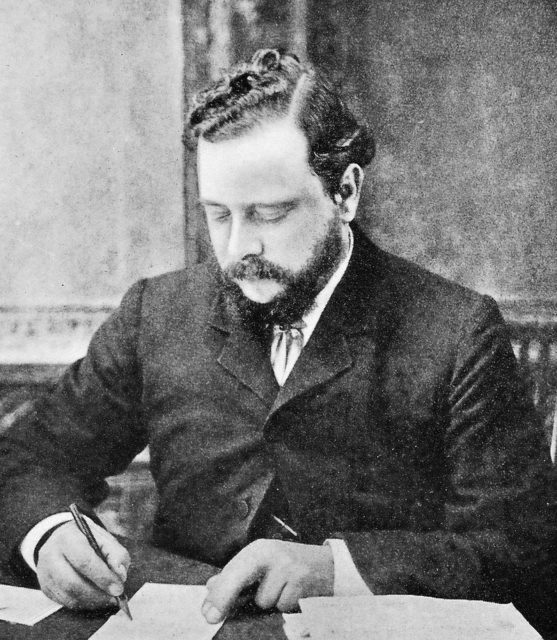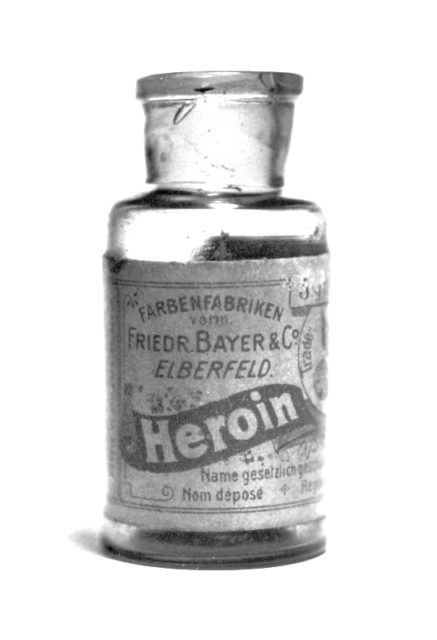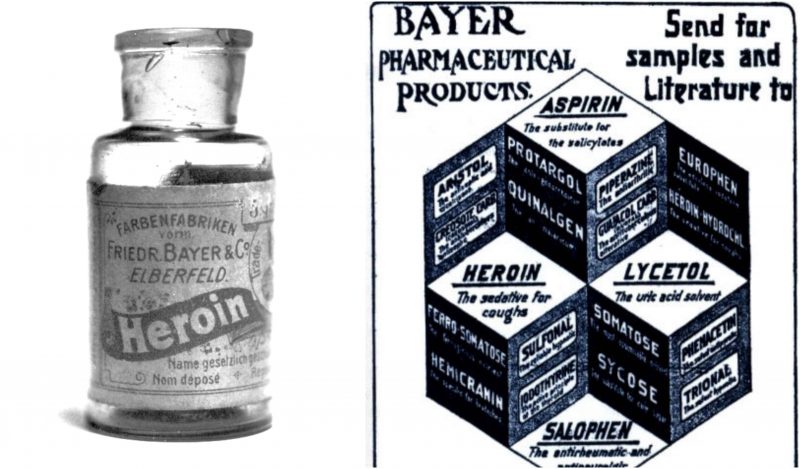When we hear the word heroin, we think of an exceptionally addictive and dangerous drug that can cost someone their life. But it has a surprising history–heroin was once considered like any other medicine that a doctor could prescribe to patients to treat a cough or a headache. At least that was the case until things started getting out of control.
While the substance heroin was created sometime in the latter part of the 19th century, the narcotic had its forerunners perhaps as early as the Neolithic days. The wild poppy served as the source of morphine and opium. Reportedly, the usage of the poppy started in the Mediterranean and spread to Asia, first India and then China.
At least for one chapter of history, opium was responsible for war: When the British started selling tons of opium each year to China during the mid-19th century, it became a problem for the Chinese. Many people became opium consumers and addicts, severely affecting their society. The Chinese wanted to ban it. Ultimately, the entire situation escalated into what is called the Anglo-Chinese Opium Wars, between 1839 and 1860.

Back in Europe, opium and a number of its derivatives, such as morphine and codeine, had long been used for their medicinal powers. However, the Opium War perhaps set off an alarm that prompted research into finding an alternative to this addictive substance.
Which is where the story of heroin begins. The year was 1874, when the English chemist and physicist, C.R. Wright, made a historic breakthrough in the facilities of St. Mary’s Hospital Medical School in London. In the lab, Wright synthesized heroin after mixing and simmering morphine with acetic anhydride.

He commissioned further testing of the new substance, joined by F. M. Pierce of Owens College in Manchester. The initial results (the testing done on dogs and rabbits) had already shown some of the uncomfortable side effects of the new compound, being anxiety, insomnia, and vomiting, among other things.
At this point, heroin was designated as diacetylmorphine and did not find its way to the companies that produce drugs, thus both Wright and Pierce withdrew from further research. Over two decades later, German chemist Felix Hoffman would be the one to take the substance back to the lab.

Hoffman was then based in Elberfeld, Germany, and employed by the Bayer pharmaceutical company. He would carry out his experiments under the supervision of one other German scientist, Heinrich Dreser, and the two would eventually find out that the substance was effective in treating several common illnesses.

Soon enough, Bayer emerged as the first company to introduce the drug to the world market. It would advertise not as diacetylmorphine but under its more famous name of “heroin.” The bulk production of heroin as per medicinal purposes would commence in 1898 and continue at least until 1910. Initially sold as a non-addictive replacement for morphine and also for treating coughs, this new “wonder” of pharmacology was available at drugstores in numerous countries around the world.

Aside from treating patients’ coughs, doctors soon started prescribing heroin to people who had recurring headaches, or women who struggled with “premenstrual syndrome,” and it was sometimes given to simply treat a cold. In one instance, the drug was available as an over-the-counter drug, while a bizarre advertising program reportedly delivered free samples of it to people’s mailboxes.
In 1914, diacetylmorphine arrived in the United States. It was also available for medicinal purposes, along with a few other drugs from the opioid family. A decade later, the effects of heroin could be felt everywhere around the country, with hundreds of thousands of addicts created, some of whom also helped increase the crime rate in the U.S. That is why in 1924, the U.S. banned heroin.
Heroin’s being used as a medicine had eased after World War I and the Treaty of Versailles was signed. According to the treaty, Bayer didn’t have as many trademark rights to the drug as before.
At present, heroin is designated as one of the most addictive of all substances, which is why it remains tightly controlled.
